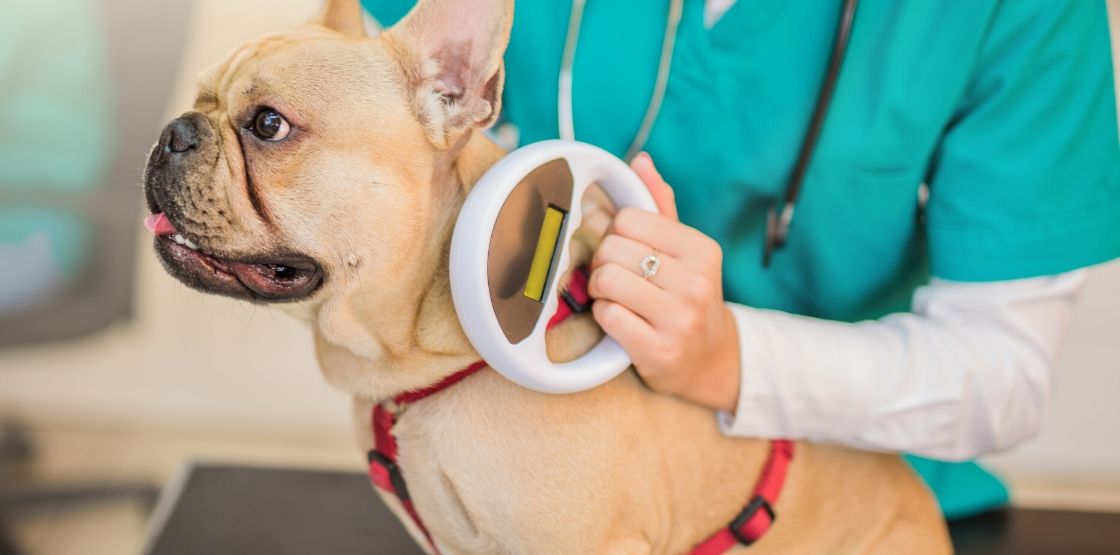What are Pet Microchips?
Microchips are a method of using permanent identification for your pet. Roughly the size of a grain of rice, the microchip is implanted under your dog or cat's skin between the shoulder blades. Each microchip in the world uses a unique 10 digit number that is supplied to a microchip database registry. Attached to this number are the owner's details.
If your pet is microchipped, make sure to ensure that the contact information for the microchip registry stays current. If moving, you need to contact the registry to update your information. Without this, your microchip cannot be used to reunite you and your pet. The microchip itself is not a GPS unit, so if your pet becomes lost, it cannot be used to track them, only to identify them if they end up in a veterinarian's office or animal shelter.
Are Microchips Safe?
For the most part, microchips are safe. However, there are some potential reactions that you should be aware of such as your pet having a localized reaction when the microchip is placed and getting an infection. This may be more likely if a microchip is being placed in a pet who already has a skin infection or is dirty.
There have also been some reported cases in veterinary medicine of tumors occurring at the injection site and bodies rejecting the implant. These cases are very rare.
Also, microchips can migrate. Instead of staying between your pet's shoulder blades, they can move to other locations, such as the neck or belly of your pet.
How Microchips Work
Microchips are radio frequency transponders that have a unique ID number. When scanning a chip a veterinarian or shelter employee transmits the ID number. You do not have to worry about things like batteries because they are not needed with the microchip. The only real requirement is that you keep your contact information updated in the microchip's registry so that if you and your pet are separated, you have a chance at being reunited.
You May Also Like:
Related Search Topics (Ads):
Pros and Cons of Microchips
Unfortunately, one in three pets gets lost within their lifetime. That is roughly 33% of pets getting separated from their owners. While a microchip is not a foolproof way to keep your pet from getting lost, it greatly increases the odds that you will be reunited with them. While collars can fall off, your pet's microchip stays in place.
If your pet is not one to wander off , a microchip is less necessary than if your cat likes to try to run outside when you come home in the evenings. After all, there are potential safety concerns when microchips are placed, such as local site infections.
For most pets, the risks of not being microchipped outweigh the risks of getting a microchip. You never know when you might need to travel with your dog or cat. It is better to already have the microchip placed when they are undergoing an anesthetic event than trying to do it with your cat awake in the vet's office.
Do Microchips Hurt Your Pet?
Many pets do not appear to be bothered by a microchip once it has been placed. It does not tend to cause any pain or discomfort. With this being said, the microchip is about the size of a grain of rice and gets injected with a 12 gauge needle. This is significantly larger than the size of the needles used to administer vaccines to dogs and cats, so it certainly can hurt.
One of the best times to microchip your pet is when they are under anesthesia. Regardless of whether they are getting spayed, neutered, or getting their teeth cleaned, inserting the microchip when they are already asleep means they do not notice a thing.
Your veterinarian can also apply a local anesthetic. Doing so helps minimize any pain or discomfort that your pet feels from the large gauge needle.
Making a Micropchipping Appointment for Your Pet
The easiest way to get a microchip is to call your veterinarian's office. If your dog or cat is undergoing anesthesia, you can often make arrangements ahead of time to have the microchip placed. Your local animal shelter or even local veterinary school may also place microchips. Contact your veterinarian to see if they can and will place the microchip for you.
In Summary
Most pets benefit from having a microchip placed. It helps minimize the risk that you and your pet will be permanently separated if they get lost or escape out of the house. There are some potential consequences, but these are generally minor compared to the possibility that you will not be reunited with your best friend.

